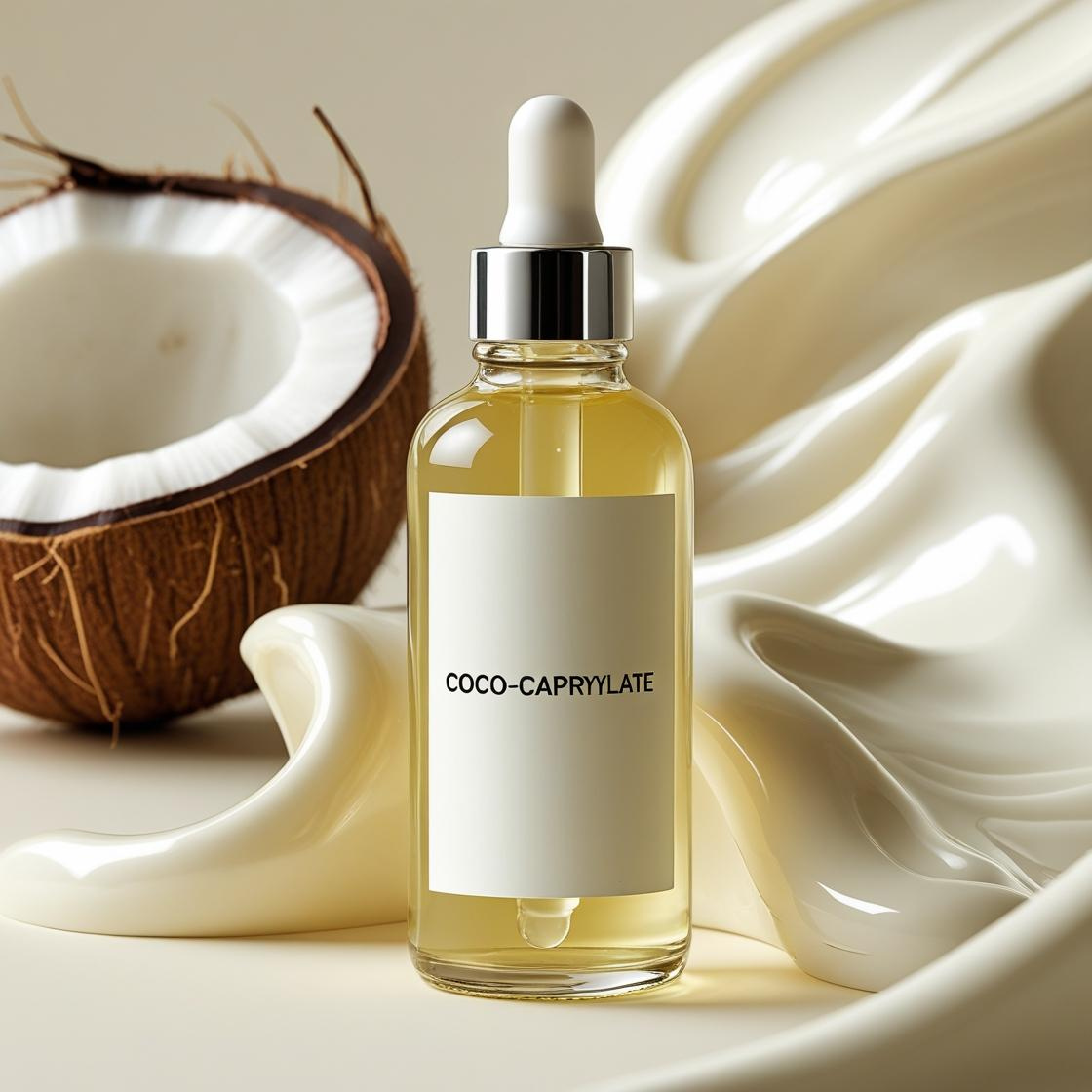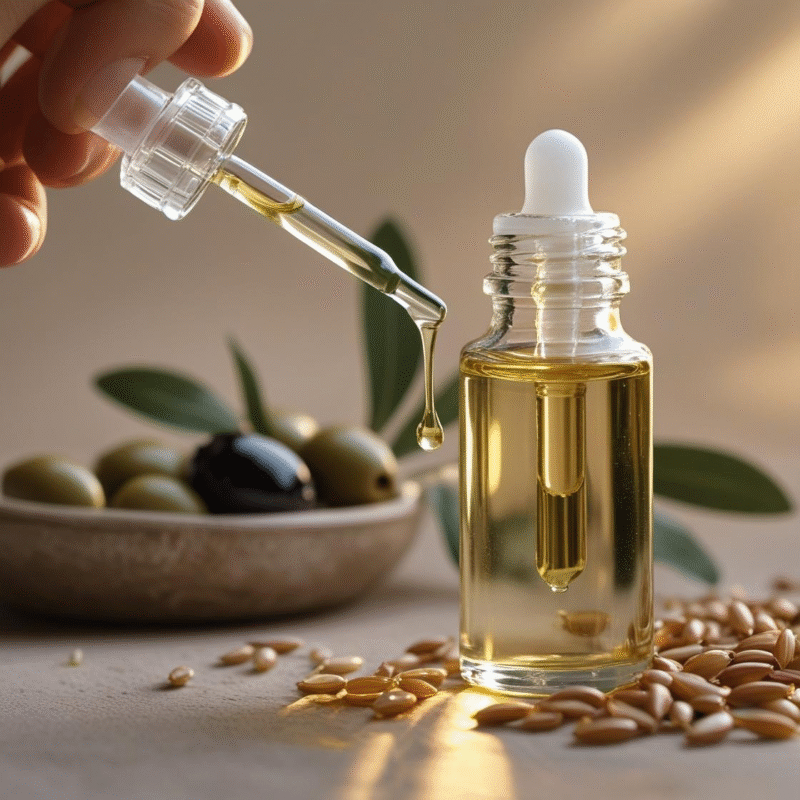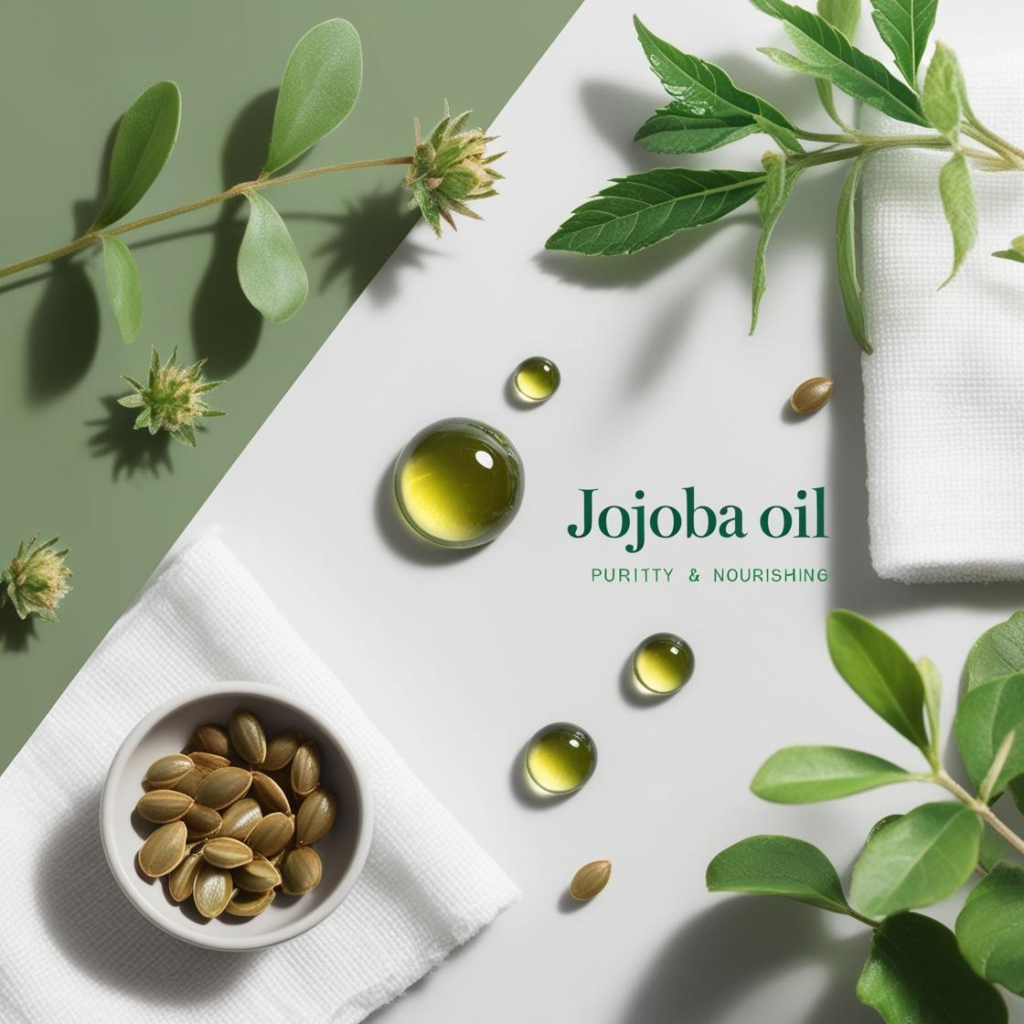CAS Number 107525-85-9
INCI Name Coco-Caprylate/Caprate
Coco-Caprylate/Caprate is a lightweight emollient ester made from C8-10 fatty acids and C12-18 fatty alcohols. It absorbs quickly, leaving skin with a dry, silky, and velvety feel. It also works as a solubilizer for other cosmetic ingredients. Its chemical formula is C42H84O4.
Purpose
Coco-Caprylate/Caprate is a lightweight emollient that softens and smooths the skin, leaving a silky, non-greasy finish. In haircare, it conditions the hair by smoothing the cuticle, reducing frizz, and adding shine without heaviness. As a skin-conditioning agent, it improves texture, enhances hydration, and boosts the overall feel of cosmetic products with quick absorption and excellent spreadability.
Origin
It is produced by combining esters of coconut-sourced fatty alcohols with caprylic and capric acids, both also obtained from coconut.
| Feature | Description |
|---|---|
| Name | Coco-Caprylate/Caprate |
| Type | Emollient Ester |
| Source | Derived from coconut fatty alcohols, caprylic and capric acids |
| pH | 4 and 8 |
| Color | Clear, colorless to pale yellow liquid |
| Odor | Faint, characteristic |
| Physical State | Low viscosity liquid |
| Solubility | Soluble in oils, esters, and lipophilic solvents; insoluble in water |
| Concentration | Typically 1% – 15% (depending on product type) |
| Melting Point | <150°C |
Spreadability Enhancer
This ingredient significantly improves the sensory profile and application behavior of cosmetic formulations. Thanks to its low viscosity and high spread coefficient, it reduces friction during product application, ensuring a smooth and uniform glide across both skin and hair surfaces. This enhancement in spreadability prevents patchiness or drag during use and increases the perceived elegance of creams, lotions, hair oils, and emulsions. It also contributes to faster and more comfortable product absorption.
Solubilizer
Coco-Caprylate/Caprate functions as a mild, partial solubilizer for oil-soluble active ingredients, essential oils, UV filters, and lipophilic compounds. It improves the physical stability and dispersion of these materials within emulsions and anhydrous systems. Its balanced polarity and medium spreading capability allow it to assist in dissolving or uniformly dispersing hydrophobic compounds, ensuring consistent delivery, even texture, and preventing ingredient separation over time, which is especially valuable in multi-active formulations.
Skin Conditioner
As a skin conditioning agent, it improves skin texture and feel by softening rough, dehydrated, or flaky areas and restoring suppleness. Its fast-absorbing, dry-touch finish leaves the skin feeling velvety and well-conditioned without an oily film. Additionally, it enhances hydration retention by forming a breathable barrier that reduces transepidermal water loss (TEWL) without occluding the skin, making it suitable for sensitive and oily skin types prone to congestion from heavier oils.
Hair Conditioner
In haircare applications, Coco-Caprylate/Caprate delivers lightweight conditioning benefits by forming a uniform coating around the hair shaft. This coating smooths the cuticle surface, reducing friction, frizz, and static while improving overall hair texture. It enhances hair manageability, detangling, and shine without adding weight or residue. It’s especially beneficial in leave-in treatments, anti-frizz serums, hair oils, and conditioning sprays where a smooth, soft finish is required without build-up.
Fast Absorption
Due to its ester-based structure and optimized molecular weight, Coco-Caprylate/Caprate penetrates the skin’s upper layers rapidly, offering immediate softening and conditioning. Its quick absorption profile prevents surface oiliness, making it suitable for formulations designed for warm, humid climates or daytime wear. The ingredient leaves a non-sticky, powdery-smooth finish on the skin, improving product comfort and wearability.
Ingredient Compatibility
Coco-Caprylate/Caprate demonstrates excellent compatibility with a broad range of cosmetic raw materials, including fixed oils, esters, silicones, synthetic emollients, UV filters, and emulsifiers. It integrates well into both water-in-oil (W/O) and oil-in-water (O/W) emulsions, as well as anhydrous formulations like oils, balms, and sticks. Its stability in diverse pH ranges and its non-reactivity with actives like vitamin E, retinol, and chemical sunscreens make it highly versatile for modern cosmetic systems.
Non-Comedogenic
Owing to its lightweight, breathable nature, Coco-Caprylate/Caprate does not clog pores or contribute to acne formation. It delivers essential emolliency and skin conditioning to acne-prone, oily, and combination skin types without exacerbating breakouts. This makes it an excellent alternative to heavier emollients and oils that may block follicles and trigger congestion.
Silicone Replacement
Coco-Caprylate/Caprate effectively replicates the sensory performance of volatile silicones such as cyclomethicone and dimethicone. It offers excellent spreadability, high slip, and a silky after-feel, with the added advantage of biodegradability and the absence of synthetic polymers. In formulations that require a smooth, velvety touch without a silicone base, it provides an elegant, non-heavy alternative while maintaining performance consistency in creams, serums, hair oils, and sun care products.
Storage
Coco-Caprylate/Caprate should be stored in a cool, dry, and well-ventilated area, away from direct sunlight, heat sources, and moisture. It’s recommended to keep the container tightly closed when not in use to prevent contamination and degradation. The ideal storage temperature is between 15°C and 25°C. As with most cosmetic esters, exposure to excessive heat or prolonged light can accelerate oxidation and impact the ingredient’s clarity, odor, and performance.
Shelf Life
Under recommended storage conditions, Coco-Caprylate/Caprate typically has a shelf life of 24 months (2 years) from the date of manufacture in unopened, original packaging. Over time, esters may undergo slight changes in color or odor due to natural oxidation, but within the advised shelf life, these changes should remain minimal and not affect product performance. It’s advisable to conduct routine quality checks on appearance, odor, and acid value for batches stored beyond 18 months.





